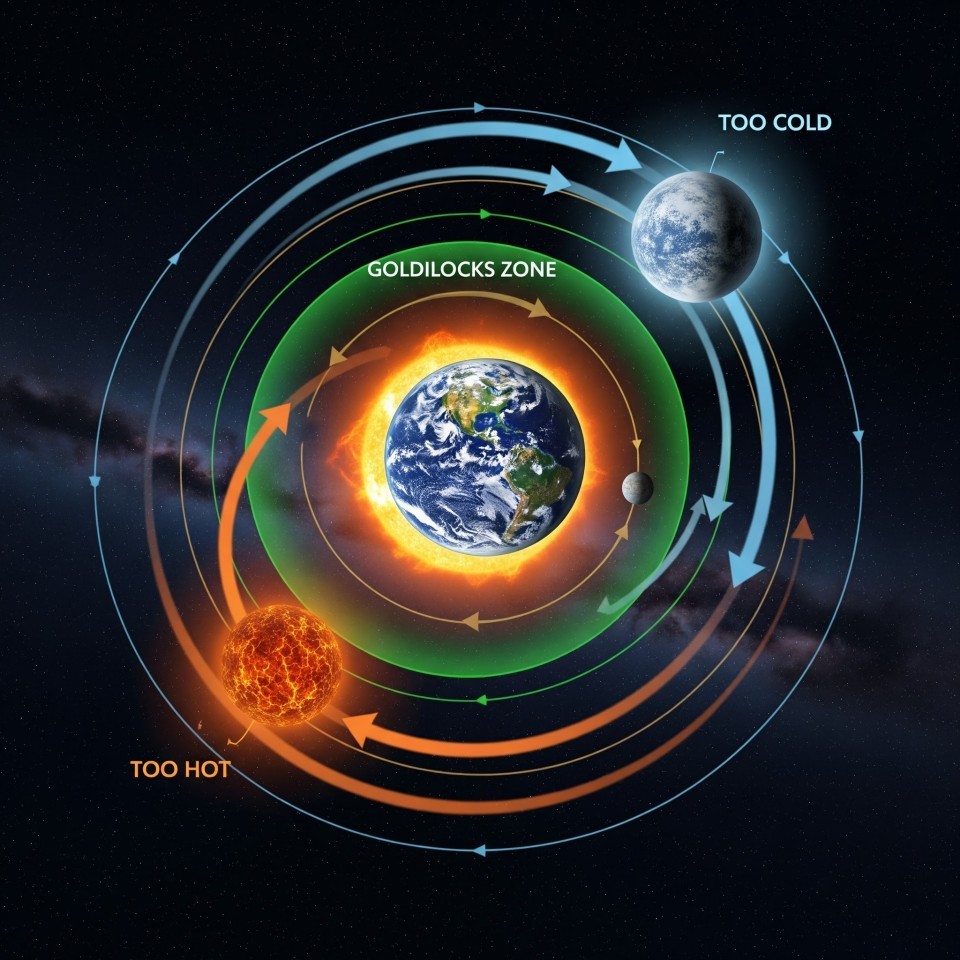Space News & Blog Articles
Earth's Position in the Goldilocks Zone
The concept of the "Goldilocks Zone," more formally known as the Circumstellar Habitable Zone (CHZ), refers to the region around a star where the temperature is just right for liquid water to exist on a planet's surface. Earth's fortunate placement within our Sun's Goldilocks Zone is a primary reason for the abundance of life as we know it.
Defining the Goldilocks Zone
The Goldilocks Zone is not a fixed boundary but rather a dynamic region influenced by several factors:
- Star's Luminosity: Hotter, more luminous stars have a wider and more distant habitable zone, while cooler, dimmer stars have a narrower and closer one.
- Atmospheric Composition: A planet's atmosphere plays a crucial role in trapping heat and regulating surface temperature. Greenhouse gases, such as carbon dioxide and water vapor, can expand the inner and outer boundaries of the habitable zone.
- Planetary Mass: More massive planets can retain their atmospheres more effectively, potentially allowing them to maintain liquid water even at the outer edges of the Goldilocks Zone.
Earth's Ideal Conditions
Earth's position and characteristics provide a perfect balance for life:
- Optimal Distance from the Sun: At approximately 1 Astronomical Unit (AU) from the Sun, Earth receives just the right amount of solar radiation to maintain an average surface temperature that supports liquid water.
- Presence of a Strong Magnetic Field: Earth's magnetic field acts as a shield, protecting the planet from harmful solar winds and cosmic radiation, which could strip away the atmosphere and boil away surface water.
- Active Geological Processes: Plate tectonics and volcanic activity help regulate Earth's climate by cycling carbon dioxide in and out of the atmosphere, contributing to a stable greenhouse effect.
- Large Moon: Our relatively large Moon stabilizes Earth's axial tilt, which in turn leads to stable seasons and predictable climate patterns over long periods.
The Search for Other Goldilocks Planets
The study of exoplanets has intensified the search for other worlds within their stars' Goldilocks Zones. Key missions and telescopes are dedicated to this endeavor:
- Kepler Space Telescope: Successfully identified thousands of exoplanets, many of which are super-Earths or mini-Neptunes, with a subset potentially residing in habitable zones.
- Transiting Exoplanet Survey Satellite (TESS): Continues Kepler's legacy by surveying bright, nearby stars for transiting exoplanets, offering prime targets for further characterization.
- James Webb Space Telescope (JWST): Capable of analyzing the atmospheres of exoplanets, providing crucial data on their potential habitability and the presence of biosignatures.
Future Prospects
Understanding Earth's unique circumstances within the Goldilocks Zone is paramount to guiding our search for extraterrestrial life. Future research will focus on:
- Atmospheric Characterization: Detailed analysis of exoplanet atmospheres to detect gases that could indicate the presence of life.
- Liquid Water Detection: Developing methods to directly or indirectly confirm the existence of liquid water on exoplanet surfaces.
- Biosignature Identification: Identifying specific combinations of gases or other phenomena that could serve as strong indicators of biological activity.
Earth stands as a testament to the delicate balance required for life to thrive. Its perfect placement within the Goldilocks Zone, coupled with a myriad of other fortunate conditions, makes it a unique and precious oasis in the vastness of space. As we continue to explore the cosmos, the lessons learned from our own planet will undoubtedly guide our quest to find other habitable worlds.
When you subscribe to the SpaceZE News Feed, we will send you an e-mail when there are new updates on the site so you wouldn't miss them.


